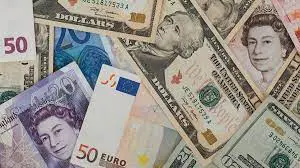US dollar index (DXY) is up by 0.11% at 104.72 level today.
Rising Treasury yields during a dull debt auction for sales of two- and five-year notes cast doubt on the market for US government debt, which helped to strengthen the currency.
At $1.0850, the euro was down 0.06% but still on track to gain 1.7% for the month—its first gain of 2024. With a recent price of $1.2754, sterling is expected to rise by 2% in May.
After Australian consumer price inflation unexpectedly surged to a five-month high in April, raising the possibility that interest rates may rise next, the Australian dollar increased sharply before levelling out and rising 0.08% to $0.6654.
According to data released on Tuesday, consumer confidence in the United States unexpectedly rebounded in May following three consecutive months of declines. However, concerns about inflation remained, and many families anticipated higher interest rates in the next year.
The mixed survey is released as investors consider the Fed’s potential next step. As of right now, they are pricing in 34 basis points of rate decreases this year, compared to 150 basis points of easing at the beginning of 2024.
A rate cut in September is unlikely because of persistently high inflation, weak areas in the largest economy in the world, and a robust employment market, which are all causing expectations regarding US interest rates to fluctuate.
This week’s market attention will be on a plethora of inflation figures, with the reading for the entire euro zone on Friday and German inflation data due on Wednesday.
The primary event, however, will be the release on Friday of the Federal Reserve’s favoured inflation indicator, the U.S. core personal consumption expenditures (PCE) price index report. It is anticipated to remain stable on a monthly basis.
The dollar index was hardly moved at 104.67 against a basket of currencies, moving away from the almost two-week low of 104.33 it set on Tuesday.
The yen, meanwhile, fell to a four-week low of 157.41 per dollar early on Wednesday, as the value of the currency continues to retrace its steps towards levels that prompted alleged Tokyo interventions at the end of April and the beginning of May.

At least two suspected interventions occurred that week after the yen fell to a 34-year low of 160.245 on April 29. It is estimated that Japanese officials spent over 9 trillion yen ($57.21 billion) to support the weak currency.
In general, the yen depreciated less against other currencies. The euro hit a one-month high of 170.795 yen earlier in the day, but the pound was up 0.13% at 200.68 yen, the highest since August 2008.
Despite being 10% lower against the dollar this year, the yen—which is susceptible to changes in Treasury yields—may manage to record a monthly gain in May.
The benchmark 10-year U.S. yield hit 4.542% in Asian hours, the highest level since May 3.
For feedback and suggestions, write to us at editorial@iifl.com
For opening a demat account click on: https://www.indiainfoline.com/
For doing stock trading & investments, go to: https://ttweb.indiainfoline.com/trade/Login.aspx
For loans, go to: https://www.iifl.com/
Related Tags

![]() IIFL Customer Care Number
IIFL Customer Care Number
(Gold/NCD/NBFC/Insurance/NPS)
1860-267-3000 / 7039-050-000
![]() IIFL Capital Services Support WhatsApp Number
IIFL Capital Services Support WhatsApp Number
+91 9892691696
IIFL Capital Services Limited - Stock Broker SEBI Regn. No: INZ000164132, PMS SEBI Regn. No: INP000002213,IA SEBI Regn. No: INA000000623, SEBI RA Regn. No: INH000000248, DP SEBI Reg. No. IN-DP-185-2016, BSE Enlistment Number (RA): 5016
ARN NO : 47791 (AMFI Registered Mutual Fund Distributor), PFRDA Reg. No. PoP 20092018

This Certificate Demonstrates That IIFL As An Organization Has Defined And Put In Place Best-Practice Information Security Processes.